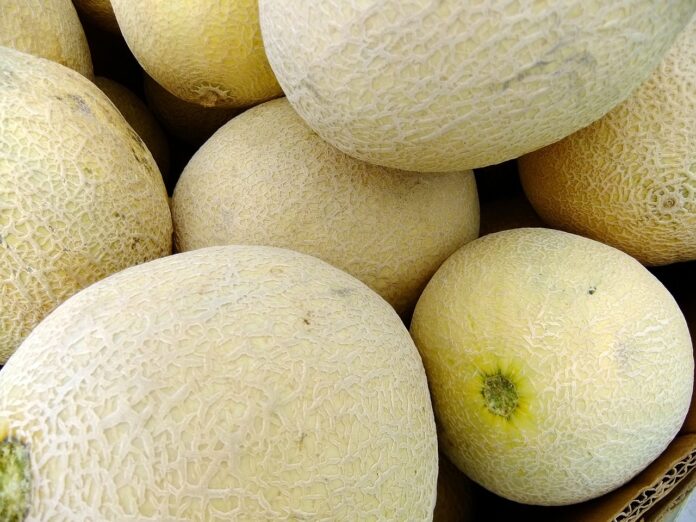Cantaloupe, scientifically known as Cucumis melo, is a popular variety of muskmelon characterized by its sweet, juicy flesh and distinctive netted skin. This orange-fleshed fruit is believed to have originated in Persia and has a long history of cultivation, with references dating back to ancient Egypt and Greece.
Interesting Facts About Cantaloupe
- The melon commonly referred to as cantaloupe in the U.S. is technically a “reticulated muskmelon,” while the true cantaloupe has a ribbed, pale green skin.
- Cantaloupe seeds are believed to have arrived in Italy from Armenia in the 16th century and were cultivated in the Papal Gardens of Cantalupo, from which it derives its name.
- Cantaloupes belong to the Cucurbitaceae family, which includes other melons, cucumbers, pumpkins, and gourds.
- Cantaloupe may date back to Biblical times, with references in ancient Egypt and Greece. The oldest illustrated reference to this fruit dates back to 2400 B.C.
- An average-sized cantaloupe contains only about 100 calories, making it a delicious yet low-calorie option.
- It arrived in Europe during the Roman Empire and was eventually named after the Italian village of Cantalupo, where it was first cultivated for papal gardens.
- This melon is about 90% water, making it highly hydrating and ideal for warm climates or summer consumption.
- Nutritionally, cantaloupe is rich in vitamins A and C, which contribute to skin health, immune support, and eye protection.
- With a short growth season of 80 to 100 days, cantaloupes are best grown in warm climates and require sandy, well-drained soil for optimal yield.
- In the United States, August 2 is celebrated as National Cantaloupe Day, highlighting its popularity and significance in American cuisine.
- The world’s heaviest recorded cantaloupe weighed an astonishing 67.5 pounds and was grown in Alaska thanks to a unique growing season, where the long hours of sunlight during summer (up to 19 hours a day) provide an intense burst of light that can help crops mature faster. This phenomenon allows some farmers to grow melons that would typically require warmer climates
- Beyond eating it fresh, cantaloupe can be used in smoothies, fruit salads, desserts, and even in savory dishes like salads with greens and cheeses.
